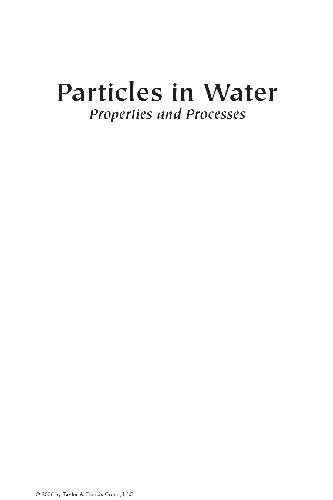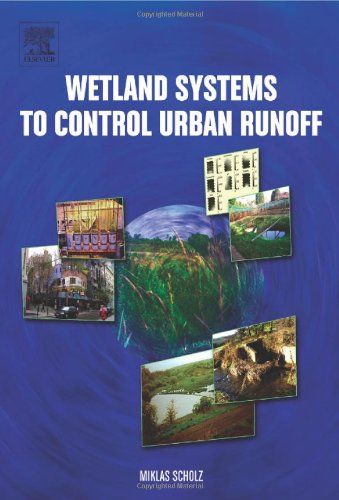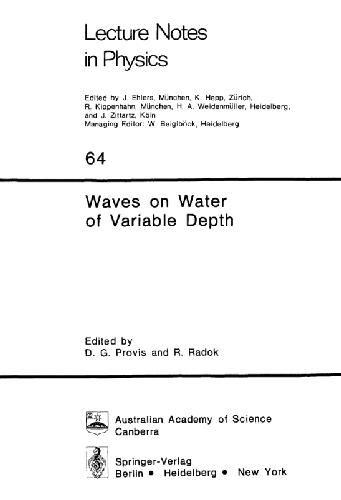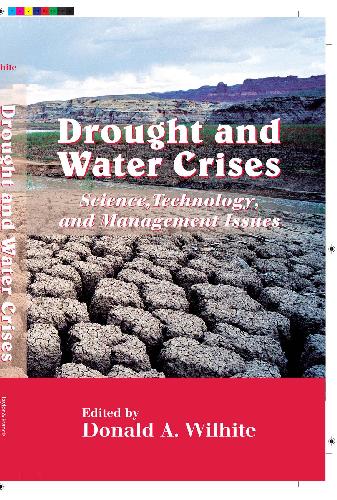John Gregory1-58716-085-4, 1-84339-102-3
Table of contents :
tx854_c000.pdf……Page 1
Particles in Water: Properties and Processes……Page 2
Dedication……Page 4
Preface……Page 5
About the author……Page 7
Contents……Page 8
1.1.1 Origin and nature……Page 12
Table of Contents……Page 0
1.1.2 Particle size ranges……Page 13
1.2 Colloidal aspects……Page 16
1.2.1 Classification of colloids……Page 17
1.2.2 Stability of hydrophobic colloids……Page 18
Further reading……Page 19
2.1 Particle size and shape……Page 20
2.2.1 General……Page 21
2.2.2 The log-normal distribution……Page 25
2.2.3 The power law distribution……Page 28
2.3 Particle transport……Page 30
2.3.1 Fluid drag……Page 31
2.3.2 Diffusion……Page 33
2.3.3 Sedimentation……Page 34
2.3.4 Effect of particle size……Page 36
2.4.1 General……Page 37
2.4.2 Turbidity and light transmission……Page 39
2.4.3 Rayleigh theory……Page 41
2.4.4 Mie theory……Page 44
2.4.5 Anomalous diffraction……Page 48
2.5 Measurement of particle size……Page 49
2.5.1 Direct methods (microscopy)……Page 50
2.5.2 Particle counting and sizing……Page 51
2.5.3 Static light scattering……Page 54
2.5.5 Dynamic light scattering……Page 55
2.5.6 Sedimentation methods……Page 56
Further reading……Page 57
3.1.1 Dissolution of constituent ions……Page 58
3.1.2 Surface ionization……Page 60
3.1.4 Specific adsorption of ions……Page 62
3.2.1 The double layer at a flat interface……Page 63
3.2.2 Charge and potential distribution in the double layer……Page 66
3.2.3 Spherical particles……Page 68
3.3 Electrokinetic phenomena……Page 69
3.3.1 The plane of shear and the zeta potential……Page 70
3.3.2 Electrophoresis and electrophoretic mobility……Page 71
Further reading……Page 73
4.1.1 Importance of particle size……Page 74
4.1.2 Force and potential energy……Page 75
4.1.3 Geometry of interacting systems……Page 76
4.1.4 Types of interaction……Page 77
4.2.2 Interaction between macroscopic objects……Page 78
4.2.3 Hamaker constants……Page 81
4.2.4 Effect of dispersion medium……Page 83
4.2.5 Retardation……Page 85
4.3.1 Basic assumptions……Page 86
4.3.2 Interaction between flat plates and spheres……Page 87
4.4.1 Potential energy diagram……Page 89
4.4.2 Effect of ionic strength Û critical coagulation concentration……Page 91
4.4.3 Specific counterion adsorption……Page 95
4.4.4 Stability ratio……Page 97
4.5.1 Hydration effects……Page 99
4.5.2 Hydrophobic attraction……Page 100
4.5.3 Steric repulsion……Page 101
4.5.4 Polymer bridging……Page 102
Further reading……Page 103
5.1 Collision frequency — Smoluchowski theory……Page 104
5.2 Collision mechanisms……Page 105
5.2.1 Brownian diffusion Û perikinetic aggregation……Page 106
5.2.2 Fluid shear Û orthokinetic aggregation……Page 113
5.2.3 Differential sedimentation……Page 116
5.2.4 Comparison of rates……Page 117
5.2.5 Effect of hydrodynamic interactions……Page 118
5.3 Form of aggregates……Page 120
5.3.1 Fractals……Page 121
5.3.2 Collision rate of fractal aggregates……Page 124
5.3.3 Density of fractal aggregates……Page 126
5.4 Strength and breakage of aggregates……Page 127
Further reading……Page 130
6.1.1 “Coagulation” and “flocculation”……Page 131
6.1.2 Destabilizing agents……Page 132
6.2.1 Hydrolysis of metal cations……Page 133
6.2.2 Polynuclear hydrolysis products……Page 136
6.2.4 Charge neutralization by adsorbed species……Page 137
6.2.5 “Sweep” flocculation……Page 139
6.2.6 Overview……Page 141
6.2.7 Practical aspects……Page 142
6.3.1 Nature of polymers and polyelectrolytes in solution……Page 143
6.3.2 Examples of polymeric flocculants……Page 145
6.3.3 Polymer adsorption……Page 147
6.3.4 Bridging flocculation……Page 149
6.3.5 Charge neutralization and “electrostatic patch” effects……Page 150
6.3.6 Kinetic aspects of polymer flocculation……Page 152
6.3.7 Applications……Page 157
Further reading……Page 158
7.2 Flocculation processes……Page 159
7.2.1 Rapid mixing……Page 160
7.2.2 Floc formation……Page 161
7.3.1 Basics……Page 163
7.3.2 Sedimentation in practice……Page 164
7.3.3 Upflow clarifiers……Page 166
7.4.1 General……Page 167
7.4.2 Dissolved air flotation……Page 168
7.5.1 Deep bed filtration……Page 172
7.5.2 Membrane filtration……Page 180
Further reading……Page 183







Reviews
There are no reviews yet.